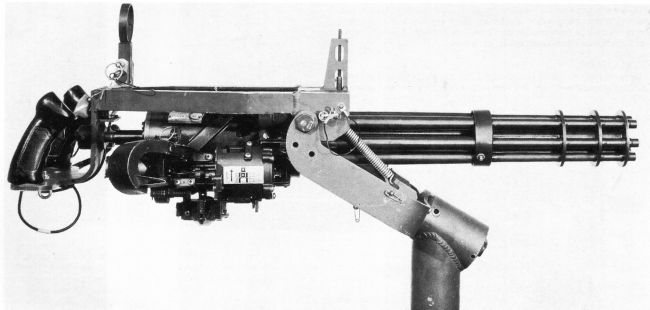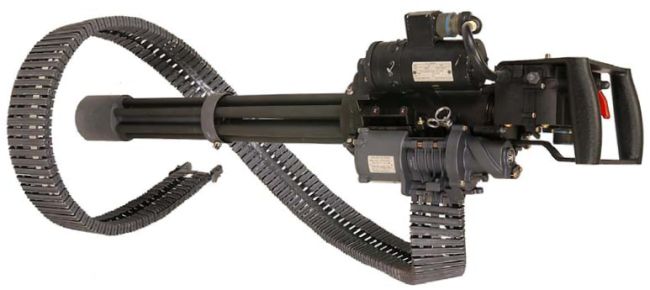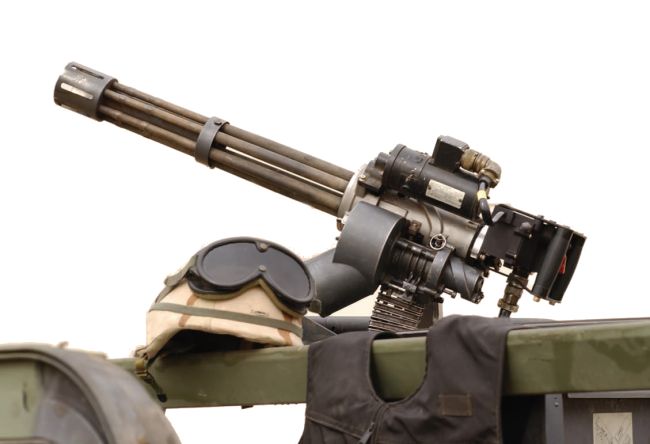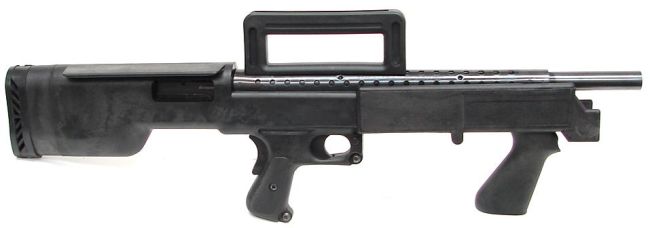
Colt CAR-15 - earliest version

Colt XM-177E1

Colt Commando (model 733, note M16A2-style brass deflector and forward assist)
Data for current production Colt mod 933 Commando
Caliber: 5.56x45 mm (.223 Remington)
Action: Gas operated, rotating bolt
Overall length: 680 - 762 mm
Barrel length: 292 mm
Weigth: 2.44 kg empty
Rate of fire: 750 rounds per minute
Magazine capacity: 30 rounds (or any other M16 type magazine)
The first carbine version of the M16 assault rifle appeared under the name of CAR-15 in 1965, an was intended for US Special Forces who fought in Vietnam. The original M16 was simply shortened by cutting the half of the lenght of the barrel (from original 20 inches to 10 inches) and by shortening the buttstock by another 3 inches. The butt was plastic and retractable, the handguards were of triangular shape and the flash hider was of original three-prong type. Based on the origunal CAR-15, Colt quickly developed the CAR-15 Air Force Survival Rifle, intended, as a name implied, to serve to downed airplane and helicopter pilots. This version had tubular handguards and metallick tubular buttstock, and fo some reasons the pistol grip was shortened.
Initial combat experience with CAR-15 brought up some problems. First, the carbine was too loud, deafing the firing soldier quite quickly. Second, the muzzle flash was also terrific, blinding the shooter at night and giving avay the position of the shooter to the enemies. Colt partially solved this problem by installing a new, longer flash suppressor. This version, known as the Colt model 609 Commando, also carried new handguards of tubular shape. This model was officially adopted by US ARmy as XM-177E1. This wersion had M16A1-style receiver with forward assist button. In the mid-1967 Colt slightly upgraded the Commando by lenghting the barrel up to 11.5 inches (292 mm), and this version was adopted as XM-177E2.
Later, with the introduction of the M16A2 and M16A3 (flat-top) models, Colt also changed the design of itys Commando line, adding three-burst options and flat-top receivers with Weaver-style rails.
Current Colt Commando carbines (Colt still called these Submachine-guns) are based on either M16A2 or M16A3 receivers, and had 11.5 inch (292 mm) barrels with M16A2-style flash suppressors, and available in either 3-round bursts or full-auto versions. Colt Commando carbines are used by various US Special Forces and by some foreign forces, including Israei ISAYERET.
From the technical point of view, the Colt Commando is similar to contemporary M16 rifle, having same light alloy, two parts receiver, direct gas operated, rotating bolt action, with non-reciprocating charging handle at the rear of the receiver. The telescoping buttstock is made from metallic tube. Due to recoil spring, located inside the butt, the Commando cannot be equipped with side- or underfolding stock withouth some redesigning. Currenly Colt Commando assault carbines are issued with standard M16-type 30 round magazines, but any other M16-compatible magazine can be used, including the 100-rounds Beta-C dual drums.























